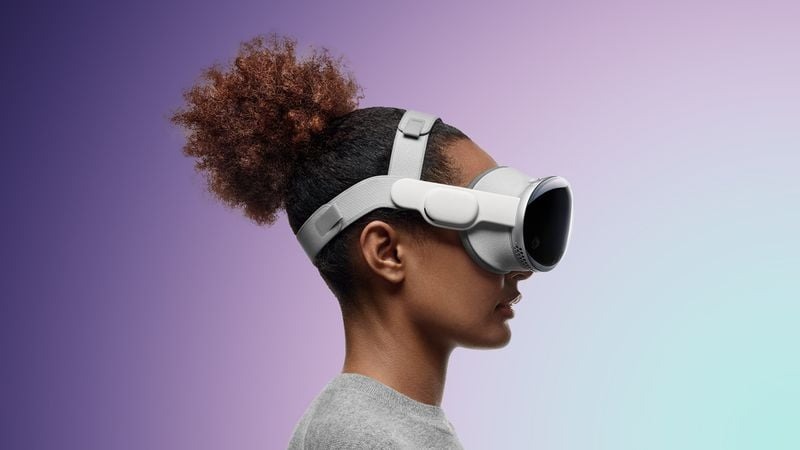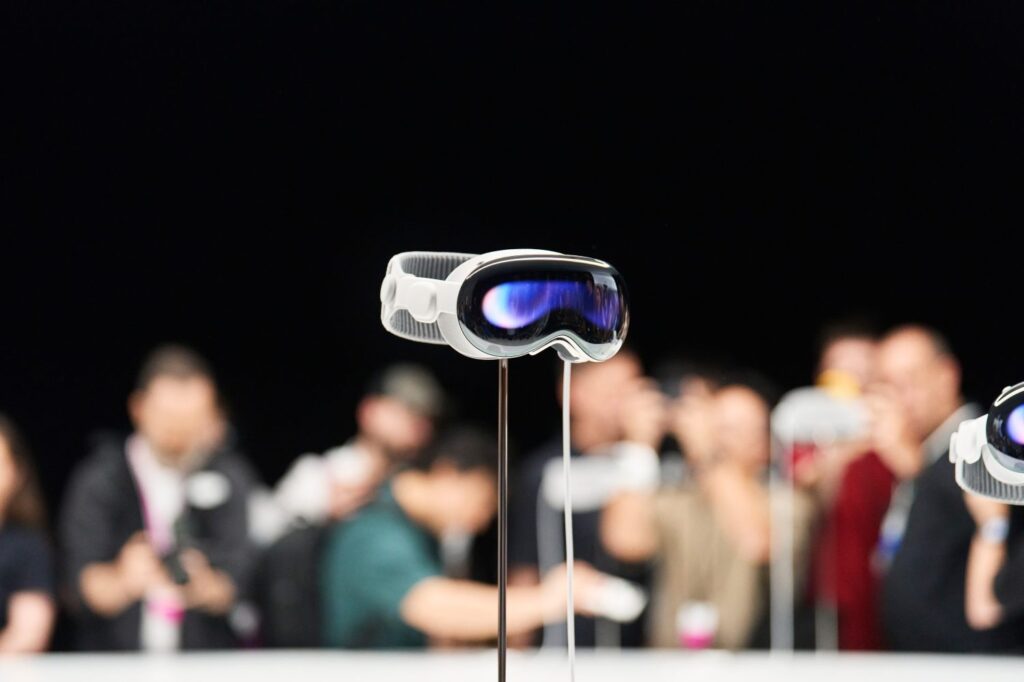A video of a pilot wearing the Apple Vision Pro headset while flying a plane has sparked outrage online, raising major concerns about distracted flying and passenger safety. The controversial video shows the pilot glancing down at a phone while wearing the Vision Pro headset during takeoff. It rapidly went viral, amassing millions of views and heated debate.
Many are calling for the pilot’s license to be revoked over this reckless stunt, while others insist a strong warning would suffice. But regardless of the ultimate outcome, the video highlights the growing problem of operating vehicles while distracted by wearables.

Reckless Stunt or Harmless Fun?
In the video, the pilot claimed he was not actually flying the plane at the time, attempting to brush off the incident as passenger fun. But that’s hardly a justification in the court of public opinion.
Even if true, the act posed needless risks by distracting and obstructing the vision of the pilot who WAS flying the aircraft. And filming the stunt further endangered safety by diverting attention.
Vision Pro Not Designed for In-Flight Use
Critically, the Apple Vision Pro headset is simply not designed or approved for use while flying an aircraft. The immersive displays and audio were engineered for gaming, media viewing, communication and productivity.
Using any unapproved wearable in the cockpit flies in the face of Federal Aviation Administration (FAA) regulations. Vision Pro has no aeronautical capabilities or data overlay. It could only serve as an unsafe distraction.
Part of a Troubling Trend
This incident represents the latest in a troubling trend of people using devices like Vision Pro in clearly dangerous situations. We’ve seen similar cases involving drivers wearing headsets.
It reflects an attitude of disregard toward safety warnings in the name of stunts and social media views. But these acts recklessly endanger others, underscoring the need for heightened vigilance.
Apple’s Warnings Against Misuse
For its part, Apple has proactively warned customers against using Vision Pro when operating any moving vehicles. The company issued clear guidance not to use the headset when driving, piloting aircraft, or operating heavy machinery.
Doing so could impair vision, hearing, and situational awareness. This poses unacceptable risks of accidents that could harm yourself and others.
Precedents for Revoking Licenses
There is precedent for revoking pilot and driver licenses for egregious cases of distracted device use. In 2019, a driver was pulled over and ticketed for using Vision Pro while operating a car.
If the FAA determines this pilot violation was equally willful and hazardous, a license suspension would be warranted. But training and warnings may suffice given the lack of actual harm.

Avoiding Distraction-Induced Disasters
Ultimately, the biggest takeaway is that devices like Vision Pro demand responsible, attentive use. Even if not illegal, using them in situations requiring alertness and focus puts lives at risk.
It only takes a momentary lapse in judgment for a distraction-induced accident to occur. We must keep this top of mind and lead by positive example.
Apple’s Guidelines for Safe Vision Pro Use
To promote safe practices, Apple provides the following Vision Pro usage guidelines:
- Do not use while driving any vehicle.
- Do not use while operating aircraft, watercraft, or heavy machinery.
- Be aware of your surroundings when using in public.
- Use only in safe, stationary environments to avoid injury.
- Avoid prolonged use to prevent eye, neck, and arm strain.
Tips for Pilots and Passengers Alike
Beyond Apple’s recommendations, pilots, drivers, and passengers can all take steps to prevent distraction-related accidents:
- Turn off or stow wearables before takeoff/driving.
- Focus attentively on piloting/driving tasks.
- Avoid filming stunts or distractions in vehicles.
- Politely speak up if you observe distracted operation.
- Prepare kids for safe habits around wearables in transit.
Preparing for a More Connected Future
As headsets like Vision Pro blur the lines between physical and digital, it’s crucial that we instill responsible usage habits. Immersive technology will only grow more advanced and prevalent.
With sound guidance and vigilance, we can harness these tools to enrich our lives while still prioritizing public safety. But achieving that balance starts with each of us.
How do you think officials should respond in cases like this pilot stunt? What more can be done to promote safe, smart use of emerging wearable tech? Share your thoughts below!










Add Comment